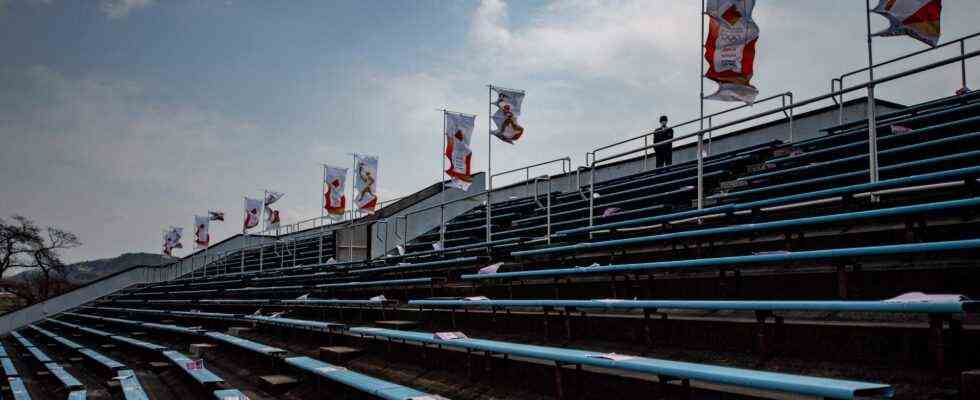Status: 07/16/2021 4:52 p.m.
Fukushima is alive – this is what Japan wants to show with the ex-disaster region as the venue for Olympic competitions. But doubts about the local conditions remain, and without spectators Fukushima becomes a sideline.
From Julia Linn,
ARD studio Tokyo
Ten years ago, earthquakes, tsunami and reactor disaster destroyed large parts of Fukushima prefecture. Olympic competitions will take place here in just over a week – around 60 kilometers from the nuclear power plant. The region had high hopes for the Olympic revival. Softball and Japan’s national sport, baseball, in the ex-disaster prefecture, that was primarily a political decision. They wanted to show the world that reconstruction was going on. It has long been clear that foreign viewers are not allowed to enter the country. After the ban on all Olympic spectators in the Tokyo area, Fukushima has now followed suit – for fear of increasing numbers in other regions. A decision that many people in the prefecture make.
Masaki Horie, deputy head of the Olympic Department of Fukushima Prefecture, hopes that the reconstruction will continue to be present at the Games – “even if the way is different, we would have liked to talk directly to the people”. He thinks it is a shame that no spectators are coming, but keeping the corona numbers as low as possible has priority. Around 100 volunteers at the stadium in Fukushima were supposed to answer questions from the spectators, especially the international ones – what their job will be now and whether they still have one is unclear.
“Our reputation is gone”
Kana Nakashio lost her home north of Fukushima in the tsunami. Today she is one of the best surfers in Japan and has a chance of participating in the next Olympic Games in Paris. Now the 17-year-old competes in a Japan-wide surfing competition in her old home, around 40 kilometers from the power plant. “I would have liked people from all over the world to come and see that we managed to rebuild,” says Nakashio – especially now that their sport is Olympic for the first time. For years she had concerns about going into the sea in Fukushima, today she is certain: “If we surfers don’t go into the water, neither will others – people have to know that it is safe.”
But is the sea really safe here? Yes, says Shuji Okuda, head of the Fukushima Prefecture Reconstruction Department and responsible for the unwinding of the nuclear power plant. According to Okuda, the water is constantly monitored at a total of 100 points around the nuclear power plant. The data are publicly available and show that surfing and swimming in Fukushima is harmless. This is also confirmed by non-governmental scientists. Yuki Igari, chairman of the Fukushima surf club, sees a different risk: “Even if they say that everything is safe, nobody believes us. Our reputation is gone and we suffer from it.” Many people in the prefecture had overcome the disaster and returned to normal – at least those who have not lost everything.
Ghost towns still in the zone
Takumi Ito is one of these people. To this day, the 30-year-old has not been able to return to his hometown of Futaba, where the nuclear power plant is also located – 7,000 people lived here before the disaster. Where Ito’s home used to be, today all that remains is gravel. He was allowed to reopen his construction business last year to support the reconstruction, but Ito has to leave the city in the evening – the radiation exposure here and in other places around the former nuclear power plant is still too high.
When the Olympic torch relay started in Fukushima, it also led through Futaba. Ten years after the disaster, that was a milestone for the entire region, says Ito. “I was hoping that the Olympics would help rebuild Fukushima. The reactor has still not been shut down completely. I would like it to be faster.”
But little has remained of the Olympic hope. In view of the pandemic, he advocates the fact that no spectators are allowed to attend the Olympic Games – but it is also a missed opportunity for his region: “You don’t get a real impression of what Fukushima is for an area if you haven’t been here. It there are many things that you can only understand when you are there. ”
But even in this seemingly lost place, there is hope: A small part – around four percent of the urban area – should be released again next spring. Then the radiation exposure there should be low enough for the first residents to be allowed to return – including Takumi Ito.

